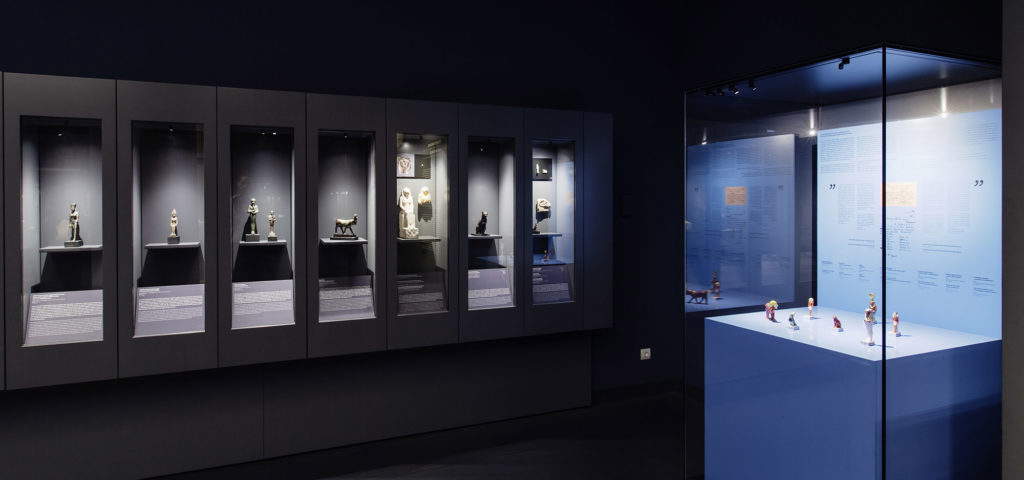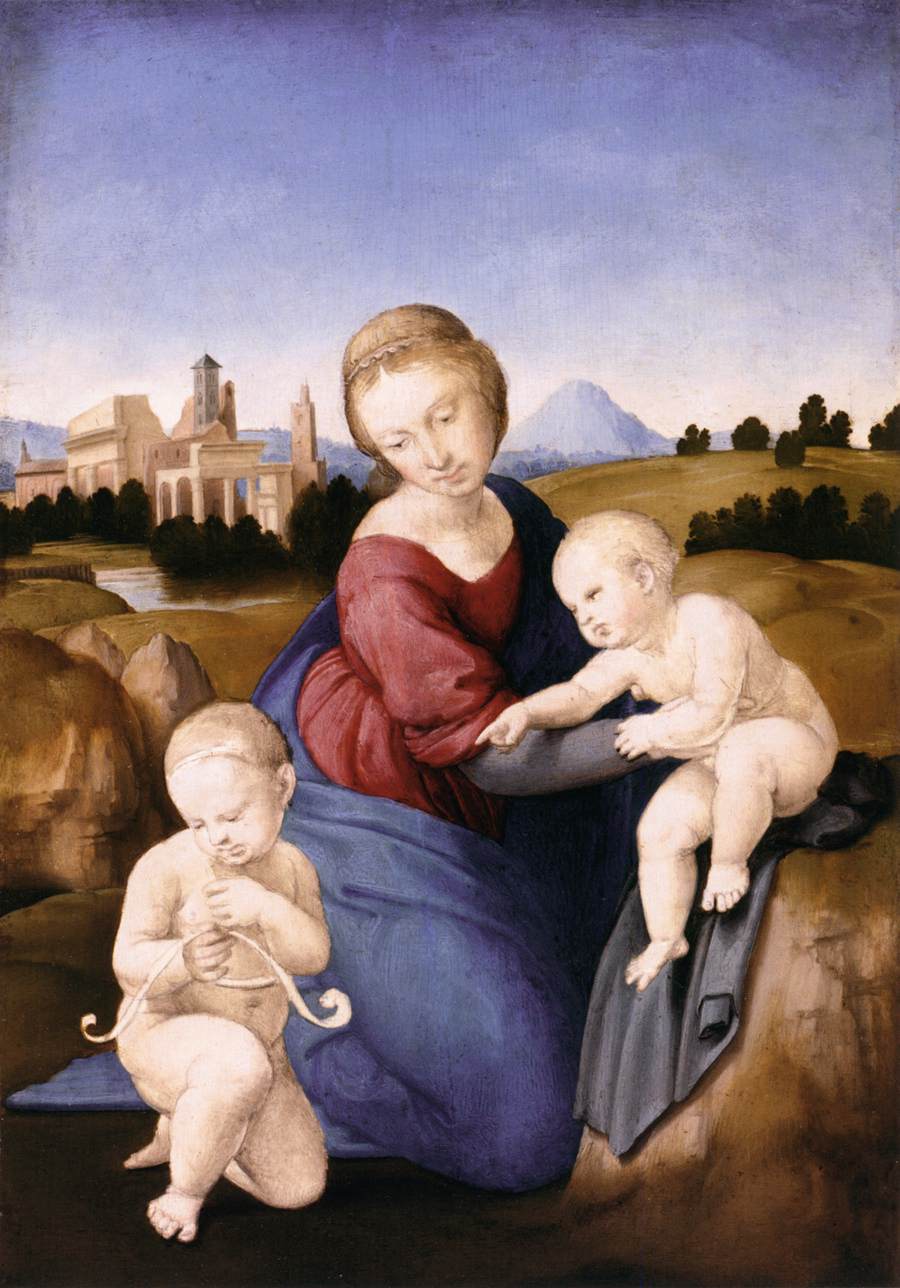Budapest ’s Szépművészeti Múzeum (Museum of Fine Arts) isHungary’s principal art museum. The institution, which opened its doors to the public in 1906, preserves one of the most extensive art collections in Europe, which originated from a collection made up of several nuclei of collections from important and wealthy Hungarian families (including the Esterházy princes, the Pyrkers, the Ipolyi, and the Jankovich) that were acquired by the Hungarian government in the late 19th century. The goal was to put together a collection of Hungarian art and international art and open it to the public, just as was being done in other European capitals. The founding act dates back to 1896: that year the site for the building that would house the museum was also decided, namely the square in front of the Műcsarnok, the large gallery reserved for exhibitions of contemporary artists. Incidentally, both the Műcsarnok building and the Szépművészeti Múzeum building were designed by the same architects, namely Fülöp Herzog and Albert Schickedanz. The work was completed in ten years, and on December 1, 1906, the museum could open, in the presence of Emperor Franz Joseph (the public opening, however, took place on December 5).
The museum’s development went on unabated (the Szépművészeti Múzeum’s collection had already become the most important in Eastern Europe after the Hermitage in St. Petersburg), but it suffered a setback during World War I. And even more devastating was the Second World War, when the museum’s headquarters was hit by bombing, but not only that: many works, in fact, were stolen by the Nazis, who embarked them without restraint or care on trains bound for Germany. The masterpieces returned to Hungary between 1946 and 1947, many of them damaged. Some, unfortunately, went missing or were destroyed. In 1957, the Hungarian artworks were separated from the rest of the collection to go into a new museum, the Hungarian National Gallery, which was later reunited with the Szépművészeti Múzeum in 2012. 2018 marked the most recent chapter in the history of the great Hungarian museum: major renovations expanded the museum to enable it to better display the Hungarian art collection that had since returned.
Today, there are about 120,000 works housed at the Szépművészeti Múzeum, divided into six main nuclei: the Egyptian antiquities, classical antiquities, ancient paintings, the sculpture collection, the graphics collection, and the Hungarian art collections. The Egyptian art collection is one of the most important in Europe and was founded in 1934, when the Hungarian government decided to unite in a single collection the Egyptian works that were stored in the country’s various museums. These are artifacts that came to the country mainly in the 19th century thanks to the collecting of Hungarian families, diplomats and travelers who specially went to Egypt or passed through on their pilgrimages to the Holy Land. Other objects, on the other hand, come from the first Hungarian archaeological excavations in Egypt, dating back to the early twentieth century and financed by the Hungarian entrepreneur Fülöp Back, who lived in Cairo: Back donated to the Szépművészeti Múzeum much of the findings of the 1907 expedition, including twenty-five sarcophagi with mummies. The Egyptian collection has never ceased to be expanded, including through bequests and donations: among the most recent is that of collector László Kákosy that arrived in 2003. No less significant is the collection of classical antiquities, the only one in the country, with about 6,000 objects ranging from the third millennium B.C. to the seventh century A.D. and allowing for an in-depth study especially of Greek and Etruscan civilization, the two most represented in the collection. It is a nucleus that originates from a substantial purchase of 135 marble works, which the museum took over in 1908 from German archaeologist Paul Arndt. And even then, the collection has continued to be expanded through purchases and donations. The museum also boasts a 35,000-volume library specializing in classical archaeology (the only one in Hungary).
 |
| The entrance to the Szépművészeti Múzeum |
 |
| The Gothic Hall. Photo by Daniel Kovacs |
 |
| The Romanesque Hall |
 |
| Egyptian Collection |
 |
| Raphael Sanzio, Madonna Esterházy (1508; oil on panel, 29 x 21.5 cm; Budapest, Szépművészeti Múzeum) |
 |
| Correggio, Madonna of Milk (c. 1524; oil on panel, 68.5 x 87 cm; Budapest, Szépművészeti Múzeum) |
The ancient painting section, on the other hand, consists of 3,000 paintings, with a focus on Italian artists, from Raphael to Giorgione, Titian to Tintoretto, Ambrogio Lorenzetti to Sebastiano del Piombo. There is no shortage of Dutch and Flemish greats, such as Petrus Christus, Gerard David, Antoon van Dyck, Jacob Jordaens, and Jacob van Ruisdael, and in addition the Szépművészeti Múzeum houses one of the most important Spanish art collections in Europe, with masterpieces by Diego Velázquez, El Greco, Francisco Goya, and Bartolomé Esteban Murillo. Painting from the German area is also well represented, with works by Albrecht Dürer, Hans Holbein the Elder, Lucas Cranach, Franz Anton Maulbertsch. The most important nucleus of the collection is that of the Esterházys: the state’s purchase of their collection between 1870 and 1871 led to the founding of the National Gallery, the direct forerunner of the Szépművészeti Múzeum. The princes’ collection included important masterpieces, beginning with Raphael’s Madonna Esterházy and Correggio’s Madonna of Milk. The museum also holds theSelf-Portrait attributed to Giorgione, which was the focus of a 1983 theft: the work was recovered by carabinieri the following year in Greece, in an abandoned convent. The last major additions came in the 1950s, when the collections of György Ráth and the Zichy Gallery arrived at the Szépművészeti Múzeum.
Also worth mentioning is the collection of six hundred sculptures, whose “stars” include a sixteenth-century bronze that the museum attributes to Leonardo da Vinci, possibly related to the undertaking of the equestrian monument to Francesco Sforza. Among the less debated but no less important works are a Vir doloris by Verrocchio, an Archangel Gabriel by Agostino di Duccio, and a St. George and the Dragon by Giovan Francesco Rustici: these are all works that are part of the nucleus from which the sculpture collection originated, namely the core of 120 sculptures purchased directly in Italy between 1894 and 1895 by collector Károly Pulszky. The collection, in the following decades, would later be enriched through the acquisition of replicas and bone casts of famous sculptures.
The works are arranged in a chronologically paced itinerary, with some very spectacular passages as well: among them, the great Romanesque Hall (so called because it was made in a style reminiscent of the Romanesque), which was for seventy years a storeroom and today is instead a large hall that houses some of the main masterpieces of the sculpture collection, or the Renaissance Hall with its loggia in which pictorial masterpieces are displayed (especially the collection of Renaissance frescoes, the largest of its kind outside Italy) and some remarkable pieces from the collection of classical antiquities. To arrange a visit, you can start from the museum’s official website.
 |
| The Szépművészeti Múzeum in Budapest, Hungary's largest art museum |
Warning: the translation into English of the original Italian article was created using automatic tools. We undertake to review all articles, but we do not guarantee the total absence of inaccuracies in the translation due to the program. You can find the original by clicking on the ITA button. If you find any mistake,please contact us.